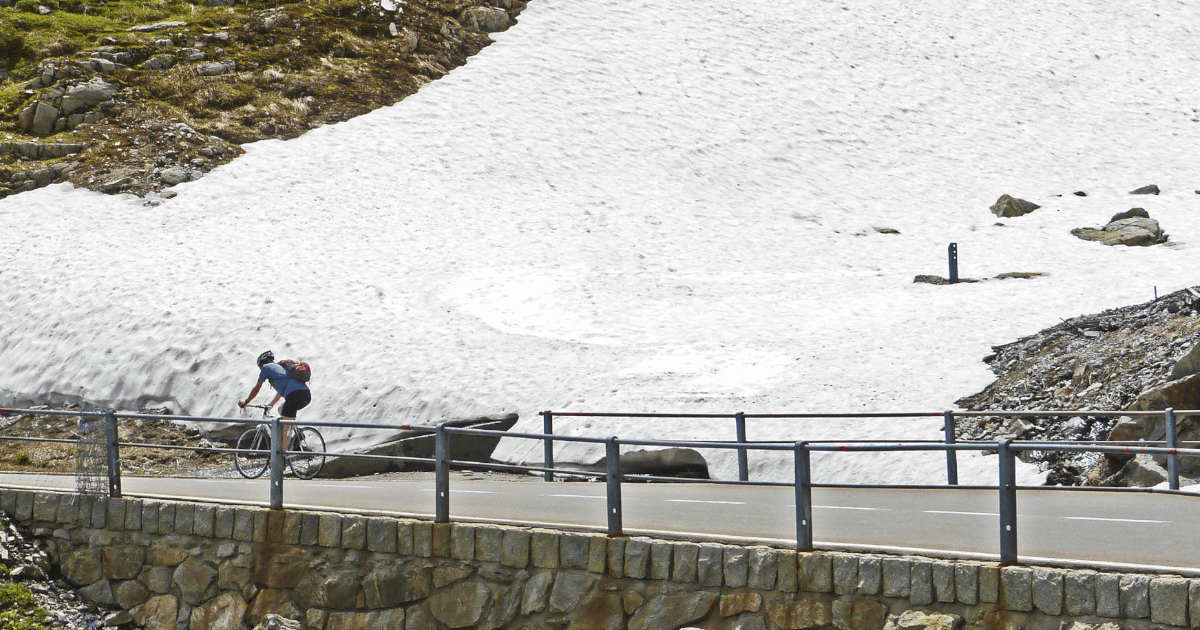Winter Cold Protection Is Harder Than Summer Heat Measures
Unlike cars, road bikes don’t come with air conditioning, so summer heat countermeasures are quite limited. However, heat can be managed more easily through hydration and rest. As long as you properly manage your water and nutrition intake, you often don’t need any special measures to cope with the heat.
In contrast, winter presents a more complex challenge: it’s cold outside, but it gets warm inside your clothing as you ride. Balancing this contradiction is key. What matters most is the perceived temperature inside your clothing. If it gets too warm, you start to sweat — and once your clothing is wet, it becomes uncomfortably cold. It’s easy to imagine how chilly it is to wear wet clothes in midwinter. In fact, in winter, “sweating” equals “cold sweat,” which can lead to catching a cold if not handled properly.
Basics of Cold Weather Gear for Road Biking
Don’t “Warm Up” or “Seal In” with Clothing
For everyday winter wear, people often choose down coats and other garments that keep the cold air out and warmth in. But if you wear that kind of outerwear while road biking, you’ll end up drenched in sweat.
Winter cycling apparel focuses not on “warming up,” but on “not getting cold.” Even if you feel fine at first, your body warms up as you ride, making it essential to release internal heat. If your clothing traps heat like a regular winter coat, you’ll quickly get sweaty.
A proper winter road biking outfit should:
- Block wind at the front (to avoid getting cold)
- Release heat at the back (to avoid sealing in warmth)
This is the foundation. Based on this, you can adjust depending on the temperature — for example, choosing lightly brushed fabric for milder conditions, or more windproof options for colder days.
Keep Hands and Feet Warm
While riding a road bike, your hands and feet are constantly exposed to wind and tend to get cold quickly. This is especially true for cycling shoes, as many models are designed with ventilation in mind for summer use. Wearing them as-is in winter will leave your toes freezing.
Cold hands and feet can make your entire body feel chilled. To prevent this, wear windproof winter gloves for your fingers and use shoe covers to shield your toes from the wind.
Use Layering for On-the-Go Adjustments
In summer, even if you start your ride at 6 a.m., a short-sleeve jersey is usually enough. In winter, however, you might start your ride in near-freezing temperatures that make you want a down jacket — only to find that it warms up to over 10°C by midday. Since winter tends to be dry with little rain, it’s easy to overheat during the ride.
If you wear a thick outer layer over a thin inner layer, you’ll likely end up too hot with it on and too cold with it off — a situation that’s hard to fix on the road. To avoid this, dress in multiple thin layers so you can fine-tune your warmth level throughout the ride.
A good rule of thumb is to plan your layers so you can adjust for every 5°C change in temperature.
For example:
- At 0°C in the early morning: Windbreaker + Winter Jersey + Mid Layer + Base Layer
- Once it hits around 5°C: Gilet + Winter Jersey + Mid Layer + Base Layer
- When the temperature climbs above 10°C: Winter Jersey + Mid Layer + Base Layer
- If it gets even warmer: unzip the jersey for ventilation
By evening, temperatures often drop below 10°C again, so putting the windbreaker back on helps prevent getting chilled from sweat on the return trip.
“Feeling Warm” Is a No-Go — Aim for “Slightly Cold”
In winter, it’s natural to want warm clothing. However, if you dress based on that instinct while riding a road bike, you’ll almost certainly end up drenched in sweat. Since you’re constantly exercising during a ride and generating heat, feeling “slightly cold” at the start is actually ideal.
A good rule of thumb is: “Not shivering cold, but definitely not warm either.” This will vary from person to person, so it’s important to find your own balance of “slightly cold = no sweating.”
Winter Gear Is an Investment
Unlike the warm seasons from spring to fall, when everyone’s out riding, winter sees fewer cyclists — yet it also has less rain, making it one of the best seasons to enjoy road biking.
That said, because road biking involves constant wind exposure while exercising, inadequate gear can easily lead to catching a cold.
For this reason, think of winter gear as an “investment for enjoyable riding.” Invest in proper cycling wear with functional features. In particular, a quality base layer that doesn’t retain sweat is crucial in winter — it may be expensive, but it’s well worth the investment.
